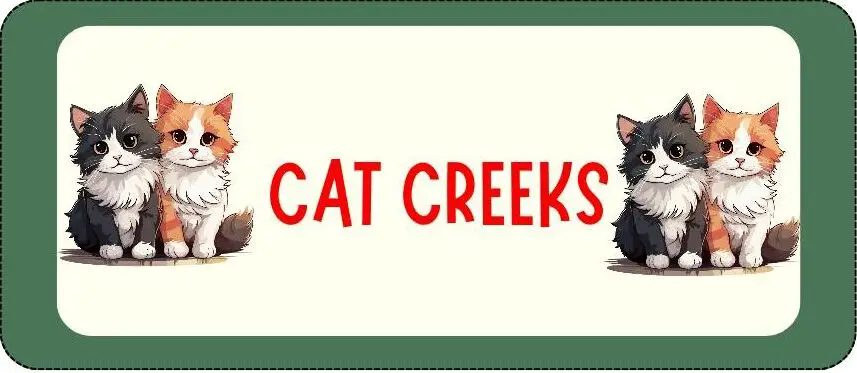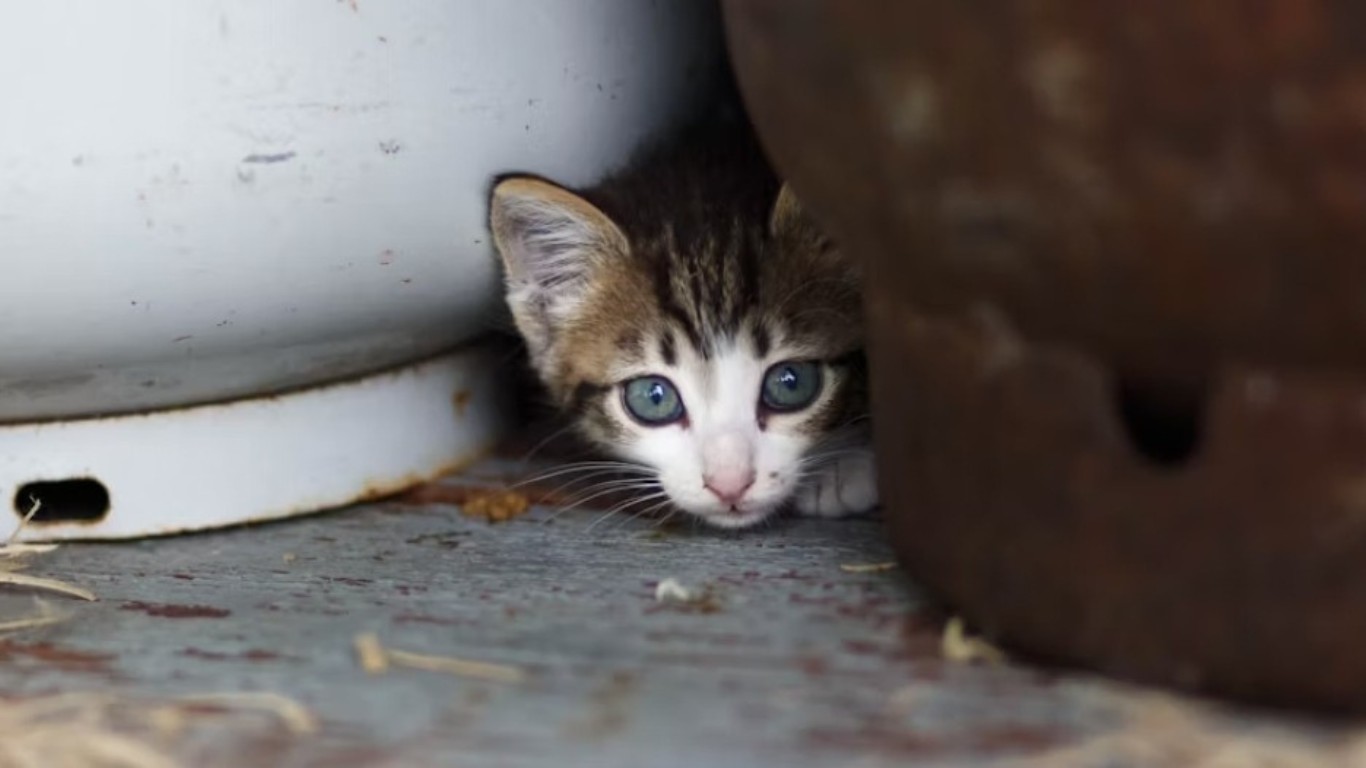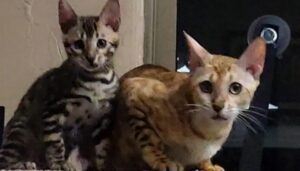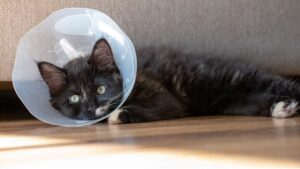Could your furry friend be the next victim? In a baffling trend sweeping the nation, feline companions are disappearing without a trace.
From sleepy suburbs to bustling cities, these enigmatic disappearances have left pet owners on edge, prompting widespread concerns about the safety of our beloved fur babies.
Join me as I delve into this perplexing phenomenon and explore the possible explanations behind these vanishing acts.
Why Cat Disappeared Without a Trace

From my experience living with cats, most cats disappear without a trace because they got killed by a predator, lost their way home after hunting, chased away by cat haters, picked up by another cat lover who thinks they are lost, or abducted by cat nappers.
Let me break it down for a better understanding…
Here are some of the most common reasons why cats disappear without a trace:
1. The cat was stolen or taken by someone
It’s a heartbreaking thought, but sometimes cats can go missing because they are stolen or taken by someone.
This could be due to various reasons, such as someone mistaking your cat for a stray or simply wanting to keep them as their own.
To prevent this from happening, it’s important to keep a close eye on your cat and ensure they are always in a safe and secure environment.
You can also consider getting your cat microchipped, which can greatly increase the chances of them being identified and returned to you if they ever go missing.
Additionally, spreading awareness in your neighborhood and among your community about the importance of respecting others’ pets and reporting any suspicious activities can also help deter potential cat thieves.
2. The cat was killed by a predator
In the wild, cats can sometimes fall victim to predators. Depending on where you live, there might be natural predators like coyotes, foxes, or even larger birds of prey that could pose a threat to your feline friend.
To minimize the risk of your cat being killed by a predator, it’s crucial to create a safe outdoor environment for them.
Consider building a secure outdoor enclosure or investing in a cat-proof fence to keep them protected while still allowing them to enjoy the outdoors.
It’s also important to keep your cat indoors during high-risk times, such as dawn and dusk when predatory animals are most active.
Providing plenty of mental and physical stimulation indoors can help satisfy their natural hunting instincts and reduce the desire to venture too far from home.
3. The cat lost his or her way home after hunting
Cats are natural hunters, and sometimes their instincts can lead them astray.
They might wander off during their hunting expeditions and struggle to find their way back home.
To prevent your cat from getting lost after hunting, it’s crucial to keep them inside during the night and consider supervised outdoor time during the day.
This way, you can ensure they are always within sight and reduce the chances of them wandering off.
If you have a large property or live in an area with dense vegetation, consider creating a designated “hunting zone” where your cat can explore safely.
This can be an enclosed area with plenty of hiding spots and toys to stimulate their hunting instincts.
By providing a controlled environment, you can minimize the chances of them getting lost while still allowing them to enjoy their natural behavior.
4. The cat was abducted by cat nappers
Cat nappers are individuals who steal cats for various reasons, such as selling them, using them for illegal activities, or even keeping them as pets without rightful ownership.
This terrifying scenario can happen when cats are left unsupervised or allowed to roam freely outside.
To prevent cat abduction:
- Keep your cat indoors or provide them with a safe and secure outdoor enclosure.
- Microchip your cat and ensure they wear a collar with identification tags.
- Spay or neuter your cat, as unaltered cats may be more desirable to cat nappers.
- Be cautious when rehoming or selling cats and verify the legitimacy of potential adopters.
5. The cat was chased away by cat haters
Unfortunately, there are individuals who harbor deep resentment towards cats, leading them to chase them away.
This could be due to personal biases, allergies, or a general dislike for felines.
To prevent cats from being chased away:
- Create a cat-friendly environment by providing them with a comfortable space indoors.
- Educate your neighbors about the benefits of cats and the importance of coexistence.
- Ensure your cat is well-behaved and does not cause nuisance to others.
- Consider using deterrents such as motion-activated sprinklers or noise devices to discourage cat haters from approaching your property.
6. The cat was trapped and disposed of by cat haters
In extreme cases, cat haters may resort to trapping and disposing of cats out of sheer cruelty.
This can happen when cats are left unattended in areas where they are vulnerable.
To prevent cats from being trapped and disposed of:
- Keep your cat indoors, especially during the night when they are more susceptible to harm.
- Supervise your cat when they are outdoors, ensuring they are within sight and in a safe environment.
- Encourage community involvement in cat welfare, such as establishing neighborhood watch programs or cat-friendly initiatives.
- Report any suspicious activities or signs of animal cruelty to the local authorities.
7. The cat lost its way trying to escape death
Cats are curious creatures, and sometimes their curiosity can lead them into dangerous situations.
They may wander too far from home, getting lost in unfamiliar surroundings. In some cases, they may even encounter predators or get hit by a vehicle.
To prevent this from happening, it’s important to keep your cat indoors or provide a secure outdoor enclosure where they can explore without the risk of getting lost.
Additionally, microchipping your cat and ensuring they wear a collar with identification tags can increase the chances of being reunited if they do go missing.
8. The cat was picked up by animal control unit
Animal control units play a crucial role in ensuring the safety and well-being of animals in the community.
However, it’s not uncommon for cats to be mistaken as strays or feral cats and picked up by animal control.
To prevent this from happening, make sure your cat is always wearing a collar with identification tags that clearly indicate they have a loving home.
Additionally, microchipping your cat is another effective way to ensure they can be identified and returned to you if they are ever picked up by animal control.
9. The cat escaped from home due to abuse and neglect
It’s a heartbreaking reality, but some cats may escape from their homes due to abuse and neglect.
Cats are incredibly perceptive creatures, and if they feel unsafe or mistreated, they may seek refuge elsewhere.
To prevent this from happening, it’s important to create a loving and nurturing environment for your cat.
Provide them with plenty of attention, playtime, and mental stimulation. Make sure they have access to fresh food, water, and a clean litter box.
If you suspect abuse or neglect in your neighborhood, don’t hesitate to report it to the appropriate authorities.
Find out more about factors that contribute to cat disappearing without a trace.
How to Prevent Cats from Disappearing

Losing a beloved pet, especially a cat, can be a distressing experience. To prevent cats from disappearing without a trace, here are some tips to consider.
Firstly, ensure your cat has a safe and secure environment by providing a fenced yard or an enclosed outdoor space.
Additionally, consider microchipping your cat and keeping their identification tags up to date.
It’s also important to keep your cat indoors during nighttime when predators are more active.
Regularly check your home for any potential escape routes or hiding spots, and secure them if necessary.
Creating a routine and providing mental and physical stimulation can help prevent cats from wandering off.
Lastly, consider spaying or neutering your cat, as this can reduce their desire to roam.
Remember, a little prevention can go a long way in ensuring the safety and well-being of your feline friend.
To understand better, here’s an article I wrote about preventing cat from disappearing.
Things to Do if Your Cat is Missing

Losing a beloved pet can be a distressing experience, especially when it’s a cat that goes missing.
If your furry friend disappears, here are some essential steps to take:
- Stay calm: It’s natural to panic, but try to remain composed. Cats are known for their independent nature, and they may return on their own.
- Search the immediate area: Start by thoroughly searching your home, yard, and any hiding spots your cat might have. Check under furniture, in closets, and behind appliances.
- Create flyers: Design and print flyers with your cat’s photo, description, and your contact information. Distribute them in your neighborhood, at local veterinary clinics, and pet stores. Post on community boards and social media platforms.
- Contact local shelters and veterinarians: Inform them about your missing cat. Provide a detailed description and any identifying features. Ask if they have seen or received any cats matching your pet’s description.
- Utilize social media: Share your cat’s information on local community groups and lost pet websites. Ask friends and family to spread the word. Social media can be a powerful tool in reuniting lost pets with their owners.
- Set up a humane trap: If your cat has been missing for an extended period, consider setting up a humane trap with enticing bait and a familiar scent. Check it regularly and be prepared to act swiftly if your cat is caught.
- Don’t give up hope: Cats have been known to return home weeks or even months after going missing. Keep searching, keep spreading the word, and maintain a positive mindset. Your furry friend may come back when you least expect it.
Remember, every situation is unique, and these steps are not a guarantee. However, by staying proactive, remaining hopeful, and utilizing various resources, you increase the chances of being reunited with your missing cat.
To find out more about what to do, here is a well written article about what to do if your cat is missing.
Conclusion
In conclusion, the baffling mystery of cats disappearing without a trace continues to perplex pet owners nationwide. As we’ve explored the possible explanations behind these enigmatic vanishings, it’s clear that vigilance and proactive measures are essential in safeguarding our feline friends. From microchipping and secure enclosures to neighborhood watch groups, together we can work towards ensuring the safety and well-being of our beloved fur babies.
Questions
Why are so many cats disappearing without a trace?
The reasons behind cats disappearing without a trace can vary. It could be due to wandering instincts, theft, or even wildlife encounters. It’s important to keep a close eye on our feline friends and take necessary precautions to ensure their safety.
What can I do to prevent my cat from disappearing?
To prevent your cat from disappearing, consider keeping them indoors or providing a secure outdoor enclosure. Additionally, microchipping your pet and ensuring they wear a collar with identification tags can increase the chances of a safe return if they do go missing.
Are there any signs or patterns to look out for when a cat goes missing?
While each case may be unique, some common signs include unusual behavior, such as increased restlessness or attempting to escape. It’s also worth checking with neighbors, local shelters, and posting flyers in the area. Don’t hesitate to report a missing cat to local authorities as well.
How can I help raise awareness about missing cats in my community?
You can help raise awareness about missing cats by sharing information on social media platforms, joining local pet groups, or organizing community events to discuss the issue. By spreading the word and educating others, we can work together to create a safer environment for our beloved feline companions.









